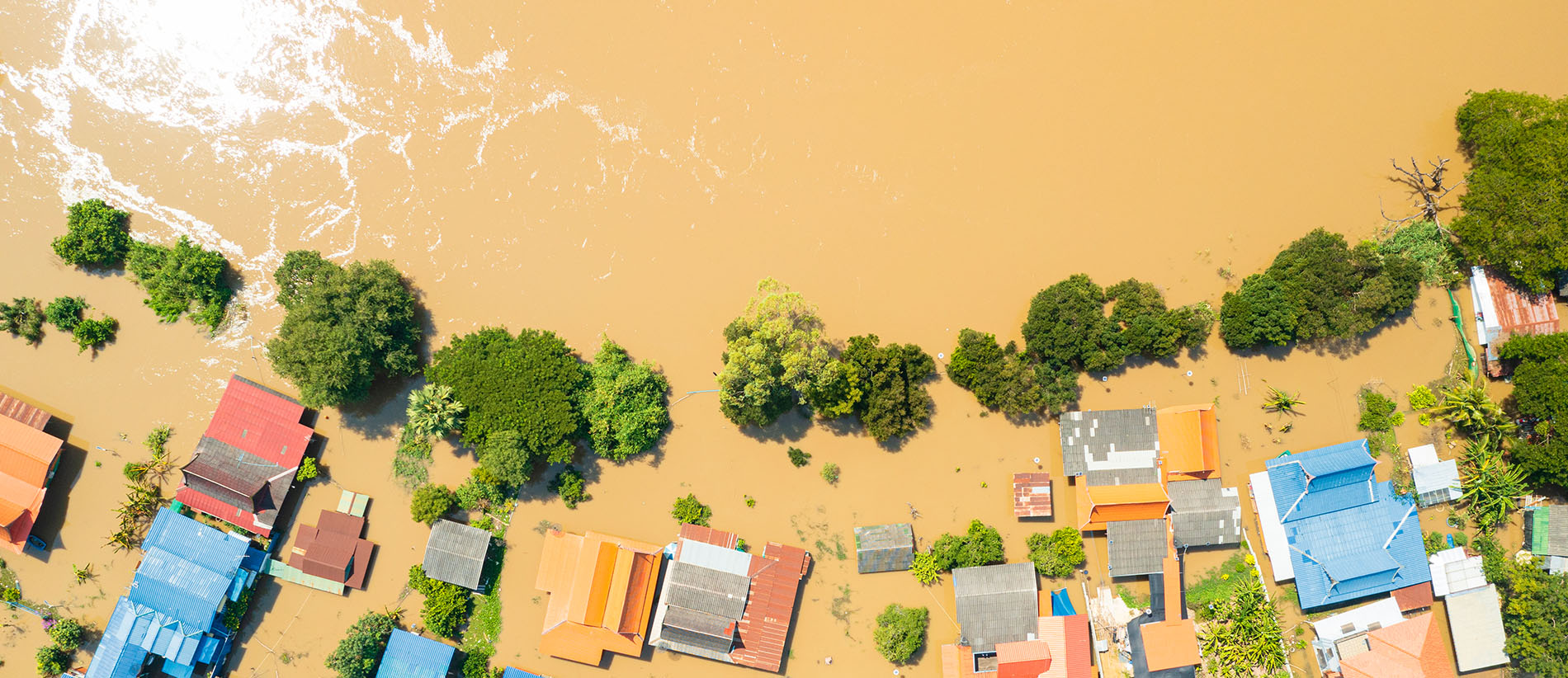Major weather events have become a regular feature on our daily news including periods of prolonged rainfall resulting in flood events. Flooding can cause widespread damage and disruption to homes, businesses, and national infrastructure, potentially resulting in costly restoration and business interruption. The continued effects of climate change mean extreme weather events are projected to increase in severity and likelihood.
Preparation before a flood event is key to help avoid or minimize the impact of a flood loss.
Common types of flood events
| River flooding | Referred to as fluvial flooding, this occurs when a river or other watercourse overflows onto the surrounding land. This is typically caused by prolonged heavy rain and can be exacerbated by snowmelt. |
|---|---|
| Surface water flooding | Referred to as pluvial flooding, this occurs when heavy rainfall overwhelms the drainage system within an area. This could occur in any area, not necessarily close to a local water body. Flash flooding can occur from heavy rainfall, particularly on elevated terrain, creating a strong force of water and the risk of moving debris. |
| Coastal flooding | Typically resulting from a combination of strong winds and high tides. |
Other causes of flooding can include sewers (where they are overwhelmed or become blocked), high levels of groundwater, and the failure of a dam or retaining wall.
Assessing the risk of flood
Consider the risk of flooding at your premises including any previous loss events, results from flood modelling tools, any installed protection systems (including their reliability), and features within local environment. For example, have there been any changes in or around your premises, such as new buildings or paved areas which could increase the risk of flooding? Existing drainage systems may not be designed for potential future rainfall events, or could be compromised by debris or other blockages.
Flood mapping tools are available to provide an indication of the extent and likelihood of flooding. However, these should not be relied upon to give a definitive answer. When using such tools, the likelihood of flooding is typically expressed as a return period for a flood event, such as a 1 in 100-year flood. This is a prediction that in a 1 in 100-year flood event, the area will be flooded. However, it should not be interpreted as if only one flood will occur every 100 years.
Mitigating the risk of flood
To help mitigate the risk of flood to your premises consider:
- The risk of a flood event occurring (severity and likelihood)
- The vulnerability of the premises to flooding
- Flood prevention, control, and response measures to mitigate the risk
Simple measures to help reduce losses in the event of a flood include subscribing to a flood alert scheme, placing vulnerable stock or equipment at higher level, and ensuring a robust business continuity plan is in place.
Where possible, suitable measures to reduce flood risk should be already incorporated during building and construction. This might include increasing floor levels or locating vulnerable equipment above anticipated flood levels. In areas at higher risk of flooding, property owners should consider measures such as flood resistant construction materials and locating utility points at a higher level. Ensure key information needed for business recovery such as plans and specifications is backed-up.
Locations within a flood zone should conduct a basic flood assessment and response plan. Locations at higher risk of flooding or that are more vulnerable should conduct a more detailed assessment and prepare a robust flood response plan. The flood response plan should be reviewed and tested regularly.
Preparing a flood response plan
| Flood risk | Consider factors such as:
|
|---|---|
| Flood vulnerability | Consider factors such as:
|
| Flood prevention | Consider factors such as:
|
| Flood control | Consider factors such as:
|
| Flood response | Consider factors such as:
|
Flood events continue to cause losses within commercial properties, but effective preparation can help minimise losses in the event a flood occurs. For further guidance or advice consult your broker and insurer.
Contact:
Guangdong
Dragon Long
AVP, Risk Solutions
dragon.long@lockton.com
Hong Kong
Patrick Lo
VP, Loss Control Consultant
patrick.lo@lockton.com
Taiwan
Bruce Lee
SVP, Risk Solutions
bruce.lee@lockton.com

